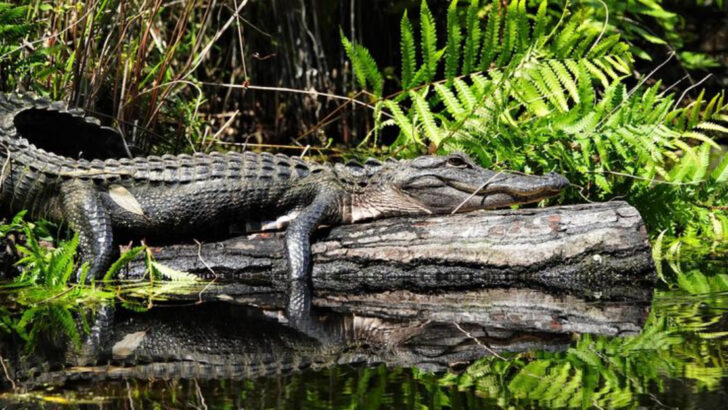Some of the wildest reptiles on Earth live right here—in your own backyard. We’re talking color-changing lizards, giant swamp-dwelling beasts, and snakes that glide through trees like it’s no big deal. No passport required—just step outside and look closely. From blazing deserts to humid forests, these creatures have mastered the art of survival with scales, speed, and serious attitude. Here are 17 reptiles that proudly call America home—and each one is more fascinating than the last.
American Alligator
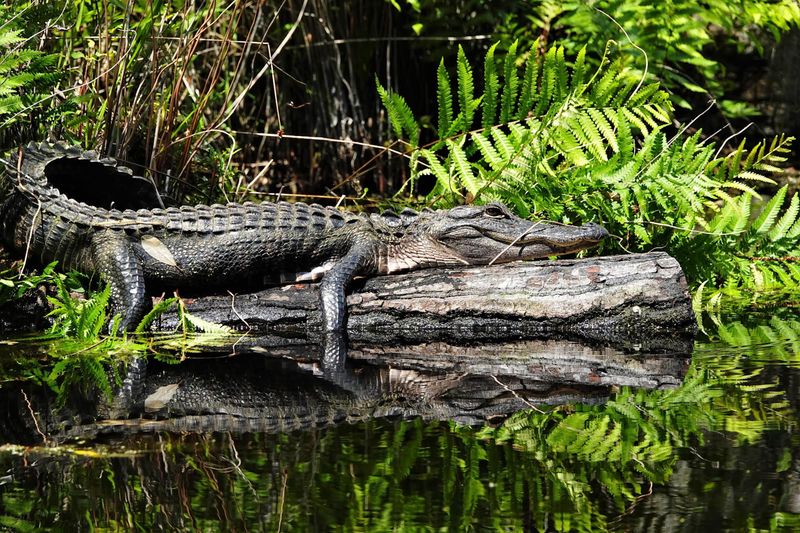
In the serene swamps of the southeastern United States, the American Alligator reigns supreme. With its powerful jaws and muscular tail, it’s a formidable predator and a symbol of the American wetlands. Typically found basking in the sun, this ancient reptile is a living relic from the age of dinosaurs. Despite their fearsome reputation, alligators play a crucial role in their ecosystems, maintaining the balance of aquatic habitats. They are often seen gliding silently through black waters, their eyes just peering above the surface. Did you know? Alligators can live up to 50 years in the wild.
Gila Monster
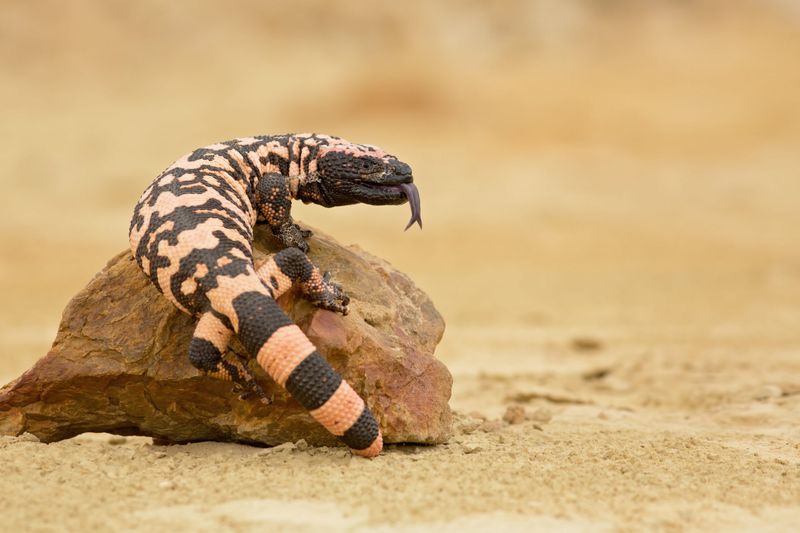
Beneath the sun-drenched deserts of the American Southwest lurks the Gila Monster. This vibrant reptile, adorned with a mosaic of orange and black, is one of only two venomous lizards in the world. Despite its fearsome appearance, the Gila Monster is a reclusive creature, spending much of its life hidden underground. Its slow, deliberate movements betray its patient nature. A fascinating aspect of this lizard is its ability to store fat in its tail, allowing it to survive long periods without food. Gila Monsters play a unique role in desert folklore, symbolizing survival and resilience in harsh conditions.
Eastern Box Turtle
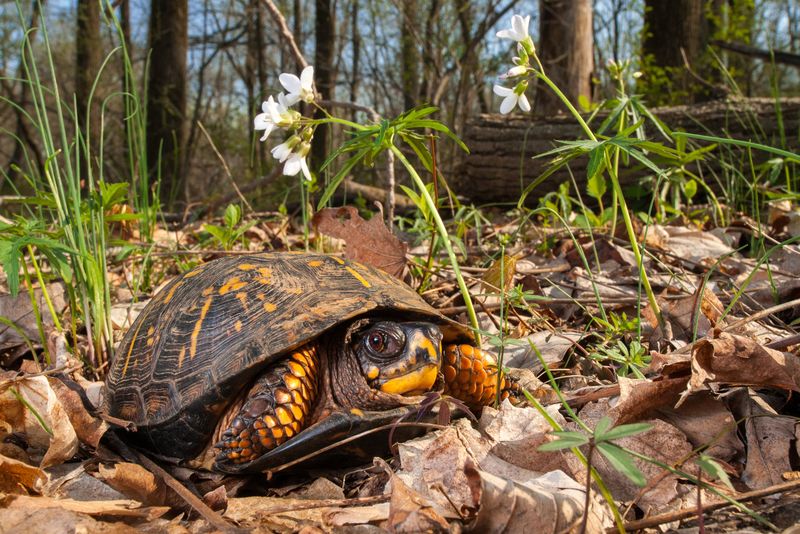
The Eastern Box Turtle, with its charming, domed shell, is a beloved inhabitant of the American forests. Its intricately patterned shell is not just for show; it provides excellent protection from predators. These turtles are known for their homing ability, often returning to the same territory throughout their lives. They are omnivorous, with a diet ranging from berries to small invertebrates. Box Turtles play a vital role in seed dispersal, contributing to the health of forest ecosystems. Despite their slow pace, they are agile climbers, often surprising observers with their ability to navigate obstacles.
Western Diamondback Rattlesnake
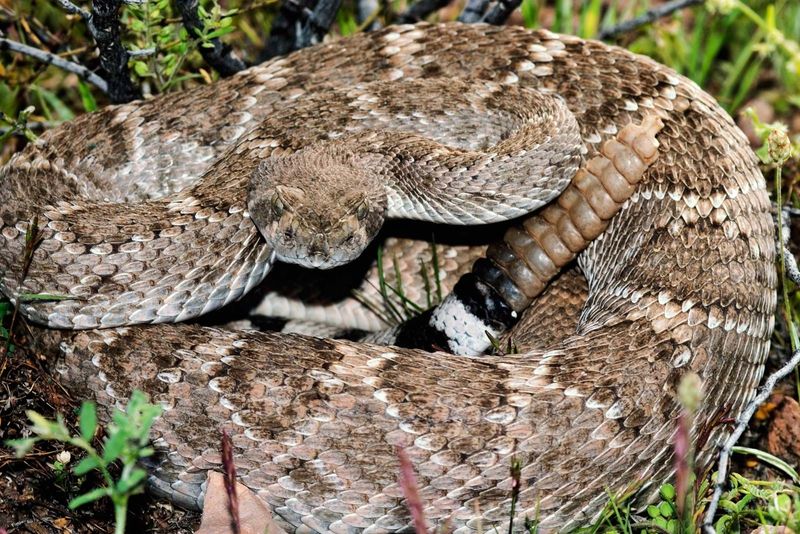
In the rugged landscapes of the American Southwest, the Western Diamondback Rattlesnake commands respect. Known for its distinctive rattle, this snake is both feared and revered. Its signature diamond pattern provides camouflage against predators and prey, making it a skilled hunter. While it’s often associated with danger, the rattlesnake’s presence is vital for controlling rodent populations. Their venom, though potent, rarely results in human fatalities due to prompt medical treatment. These snakes are masters of stealth, often heard before seen, as their rattle warns of their proximity. Despite their daunting appearance, they prefer to avoid confrontation.
American Green Anole
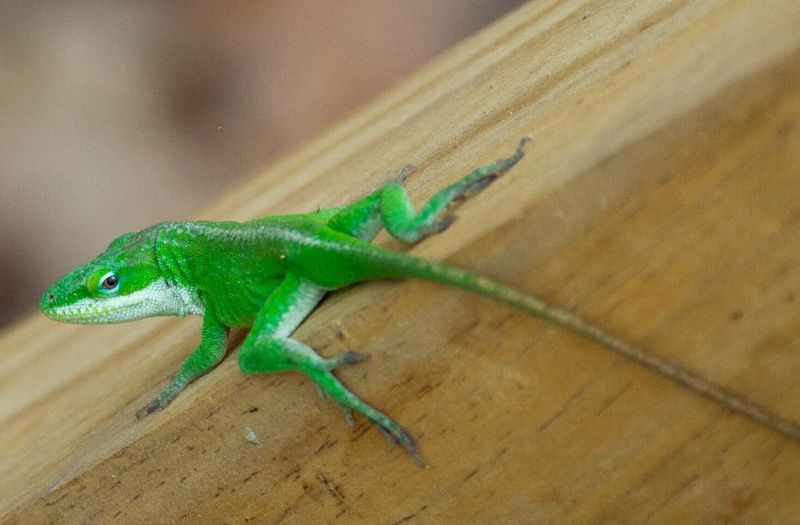
The American Green Anole, a vibrant and agile lizard, is a common sight in the southeastern United States. Known for its ability to change colors from vibrant green to brown, it blends seamlessly into its environment. These lizards are excellent climbers, using their adhesive toe pads to navigate vertical surfaces. Anoles are known for their territorial nature, with males displaying their striking pink dewlaps to ward off rivals and attract mates. These small, insect-eating reptiles play an essential role in controlling pest populations. Their presence in suburban gardens adds a touch of the wild to everyday life.
Desert Tortoise
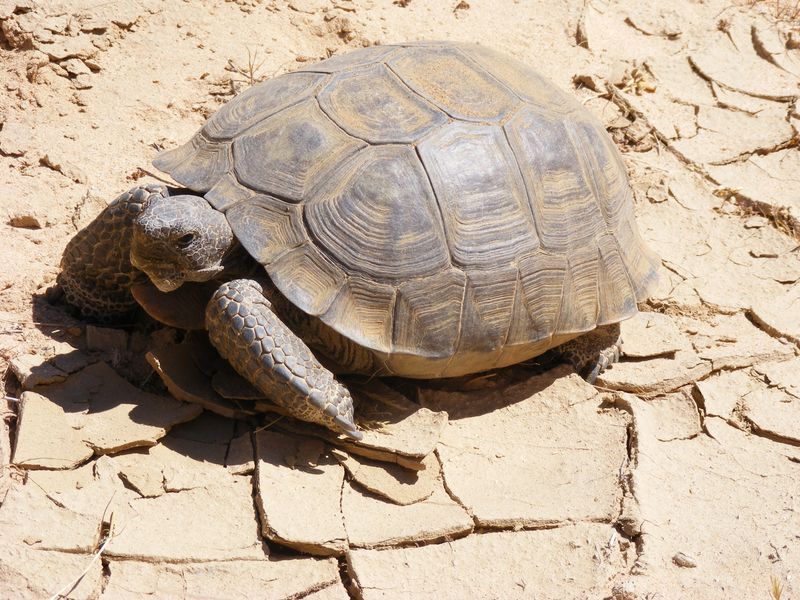
The resilient Desert Tortoise calls the arid landscapes of the American Southwest its home. With a shell built for protection, it can withstand the harsh desert conditions. This tortoise is a master of survival, capable of going months without water by utilizing moisture from the plants it consumes. Its burrowing habits create shelters that are crucial for the survival of many desert species. Despite their tough exterior, Desert Tortoises are gentle creatures and have become a symbol of the fragile desert ecosystem. Conservation efforts are vital to protect this species from habitat loss and other threats.
Common Snapping Turtle
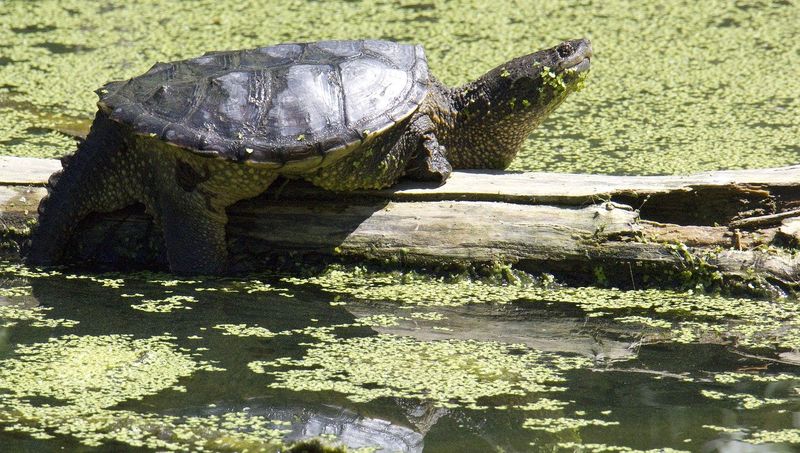
In the murky waters of North America’s ponds and rivers, the Common Snapping Turtle resides. Its powerful beak and long neck make it a formidable predator, capable of swift strikes. Though often misunderstood due to its aggressive nature when provoked, it plays a crucial role in aquatic ecosystems by controlling fish populations. These turtles are known for their long lifespan, often exceeding 50 years. Their prehistoric appearance, with rugged shells and spiked tails, adds to their allure. Snapping Turtles are a reminder of ancient times, having remained relatively unchanged for millions of years.
Copperhead Snake
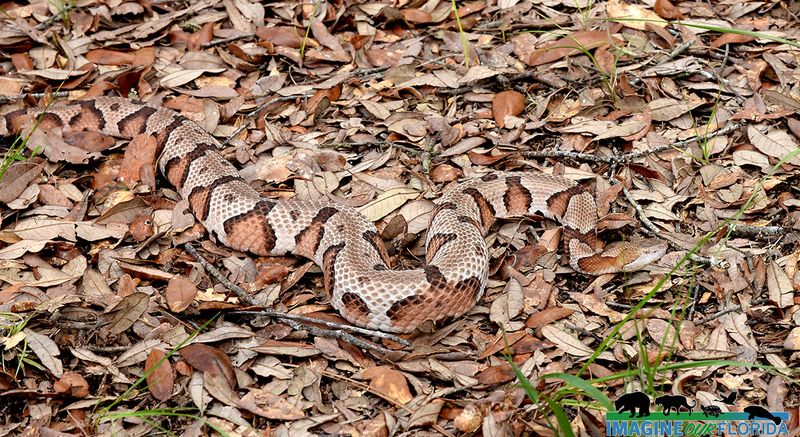
The enigmatic Copperhead Snake, with its copper-colored scales, is a master of camouflage in the forests of the eastern United States. Its pattern allows it to blend seamlessly into the leaf litter, avoiding predators and surprising prey. While its venom is potent, it poses little threat to humans due to its shy nature and preference to flee rather than fight. Copperheads contribute to controlling rodent populations, maintaining ecological balance. They are often active during twilight, adding an air of mystery to their presence. Observing a Copperhead in its natural habitat is a testament to nature’s artistry in design.
Florida Softshell Turtle
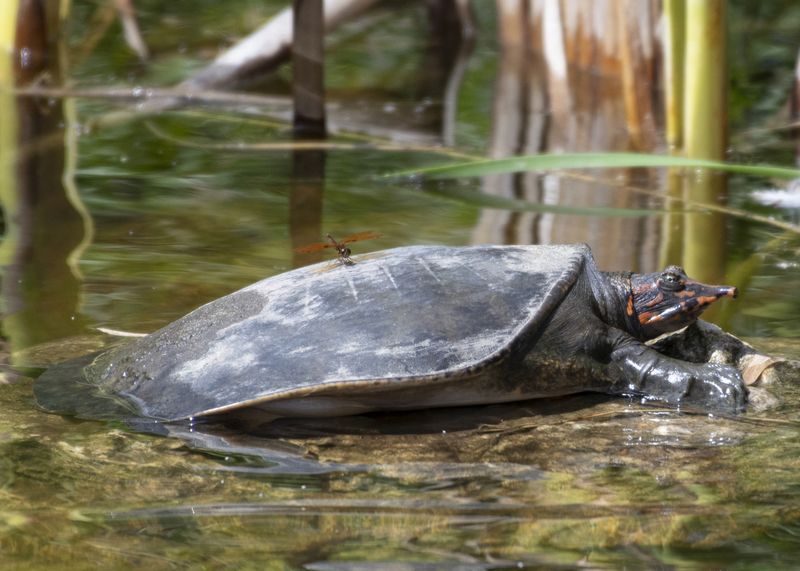
The Florida Softshell Turtle, with its leathery shell and snorkel-like nose, is a unique inhabitant of the freshwater bodies in the southeastern United States. This turtle is a swift swimmer, using its webbed feet to glide effortlessly through water. Its soft shell allows for increased mobility and growth, setting it apart from more rigid-shelled counterparts. Softshell Turtles are known for their opportunistic feeding habits, preying on fish, insects, and crustaceans. Their presence in river ecosystems plays a vital role in controlling aquatic populations. Observing their swift movements is a reminder of the wonders of adaptation in nature.
Eastern Indigo Snake
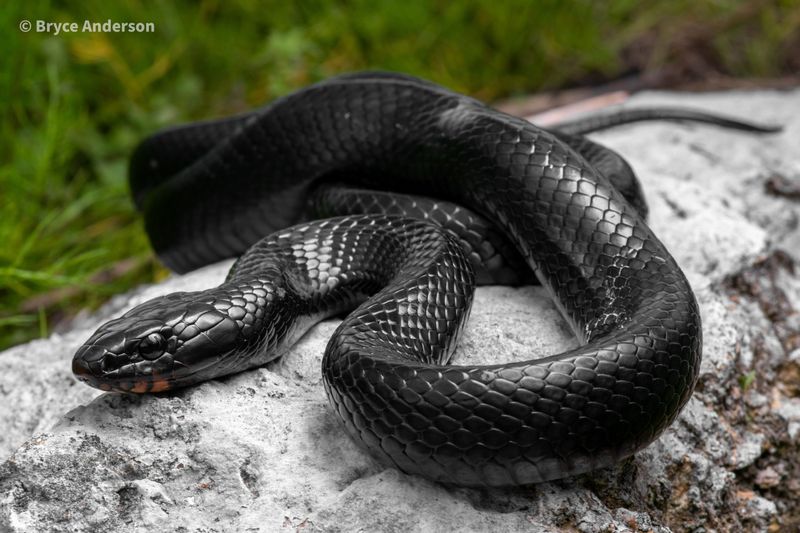
The majestic Eastern Indigo Snake, with its glossy, iridescent black scales, commands attention in the southeastern United States. As the longest native snake in America, it is a symbol of wilderness and freedom. Despite its size, the Indigo Snake is non-venomous and poses no threat to humans. It is an apex predator, preying on a wide range of animals, including venomous snakes. This snake’s presence is vital for maintaining ecological balance. Its glossy appearance and graceful movements make it a captivating sight in its natural habitat. Conservation efforts are crucial to protect this iconic species from habitat destruction.
Green Sea Turtle

The gentle Green Sea Turtle is a cherished resident of the coastal waters of the Americas. Known for their long migrations, these turtles travel thousands of miles between feeding grounds and nesting sites. With their large, paddle-like flippers, they are graceful swimmers, navigating the ocean with ease. Green Sea Turtles are primarily herbivorous, feeding on seagrasses and algae, which helps maintain healthy marine ecosystems. Their nesting habits on sandy beaches are a vital part of coastal biodiversity. These turtles face numerous threats, including habitat destruction and climate change, making conservation efforts essential for their survival.
American Crocodile
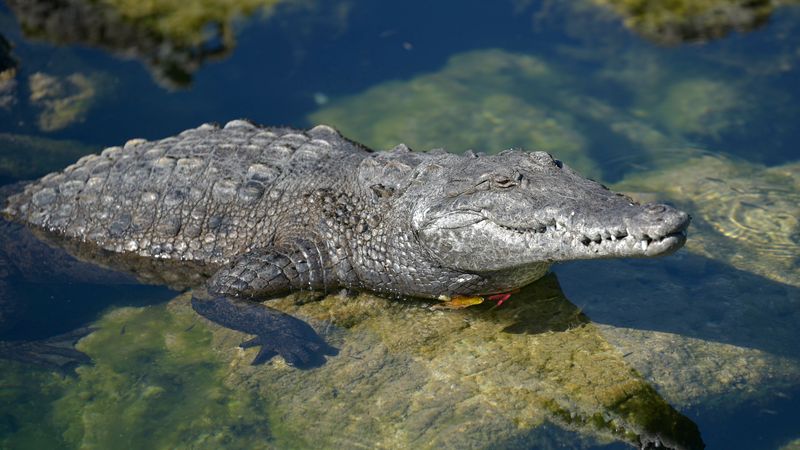
The elusive American Crocodile inhabits the coastal regions and wetlands of southern Florida and the Caribbean. Unlike its alligator cousin, the crocodile prefers saltwater habitats and is often found near mangrove swamps. With its slender snout and lighter coloration, it is well-adapted to its environment. These apex predators play a critical role in maintaining the balance of their ecosystems. Despite their size and power, American Crocodiles are shy and reclusive, often avoiding human interaction. Conservation efforts have helped stabilize their populations, but continued protection is essential to ensure their future in the wild.
Timber Rattlesnake
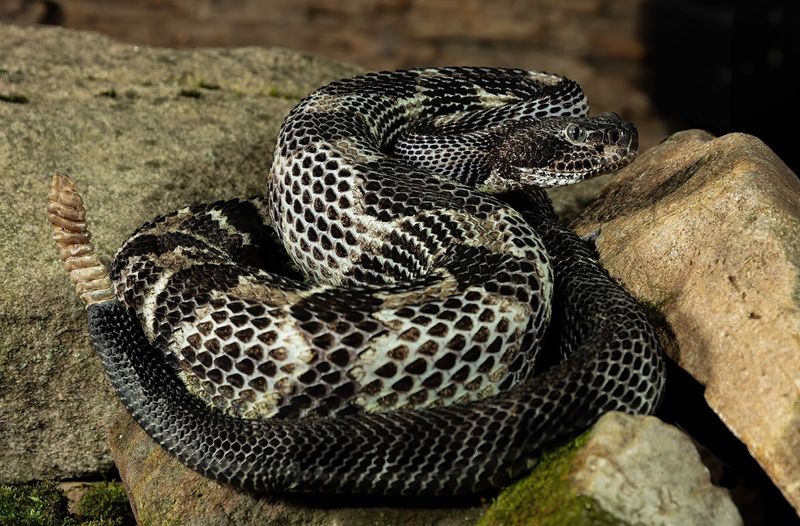
In the dense forests of the eastern United States, the Timber Rattlesnake lies in wait. Known for its distinctive rattle, it is an iconic symbol of wilderness. Its cryptic coloring provides effective camouflage among the forest floor, making it a stealthy predator. Although its venom is potent, the Timber Rattlesnake is non-aggressive and prefers to warn rather than bite. Its role in controlling small mammal populations is vital for forest health. Encounters with this snake are rare, as it tends to avoid areas of human activity. Observing a Timber Rattlesnake in its natural habitat is a glimpse into the wild.
Horned Lizard
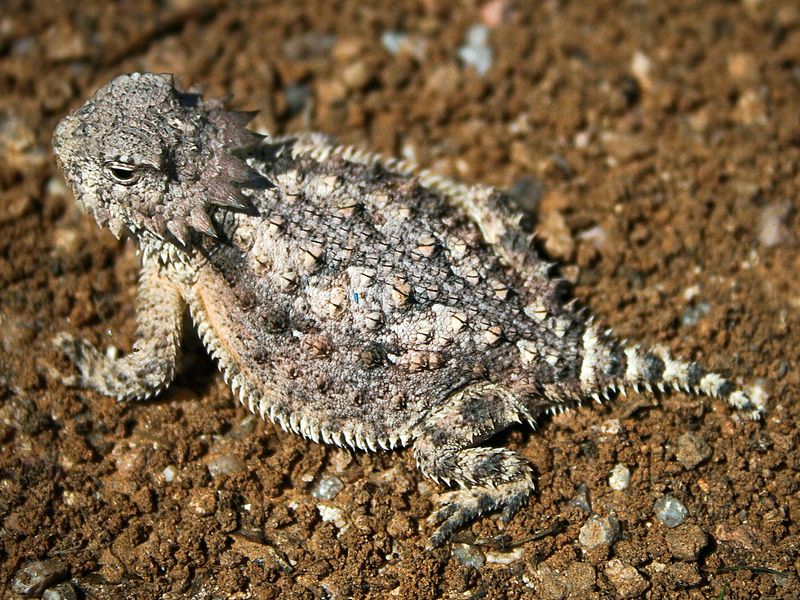
The quirky Horned Lizard, often called a “horned toad,” is a master of disguise in the deserts of the American Southwest. Its spiky appearance and ability to blend into sandy backgrounds make it a fascinating subject of study. These lizards have a unique defense mechanism, squirting blood from their eyes to deter predators. Despite their fierce appearance, they are harmless to humans and primarily feed on ants. Horned Lizards play a unique role in desert ecosystems, controlling insect populations. Their presence is a reminder of nature’s creativity in adaptation and survival in harsh environments.
Black Racer Snake

The sleek and swift Black Racer Snake is a common sight in the fields and forests of the southeastern United States. Known for its incredible speed, this non-venomous snake is a skilled hunter, chasing down its prey with agility. Its glossy black scales give it an elegant appearance as it moves gracefully through its habitat. Unlike many other snakes, the Black Racer is diurnal, actively hunting during the day. Its diet consists of small rodents, frogs, and insects, contributing to a balanced ecosystem. Observing a Black Racer in action is a testament to the beauty of nature’s design.
Kemp’s Ridley Sea Turtle
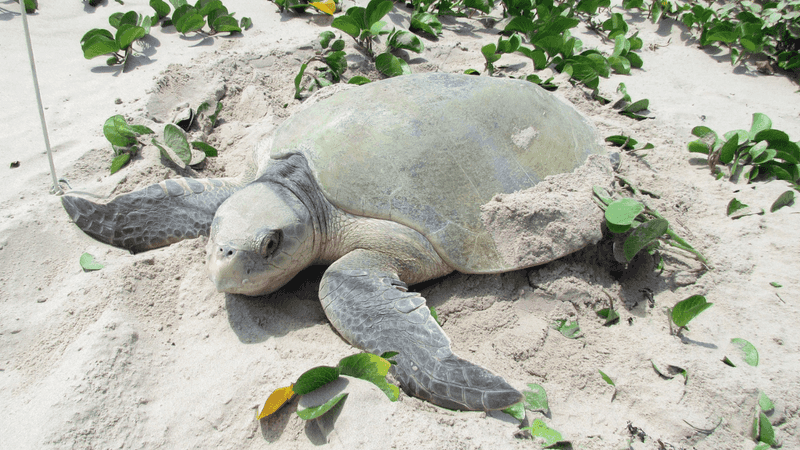
The Kemp’s Ridley Sea Turtle, the smallest and most endangered of all sea turtles, is a rare gem of the Gulf of Mexico. Known for its unique mass nesting, called arribada, these turtles come ashore in large groups to lay eggs. With a heartwarming resilience, they face numerous challenges, from fishing nets to habitat loss. Kemp’s Ridley Turtles are crucial for maintaining healthy marine ecosystems by controlling jellyfish populations. Conservation efforts have shown promising results, but the fight to save them continues. Their story is one of hope and dedication to preserving our natural world.
California Kingsnake
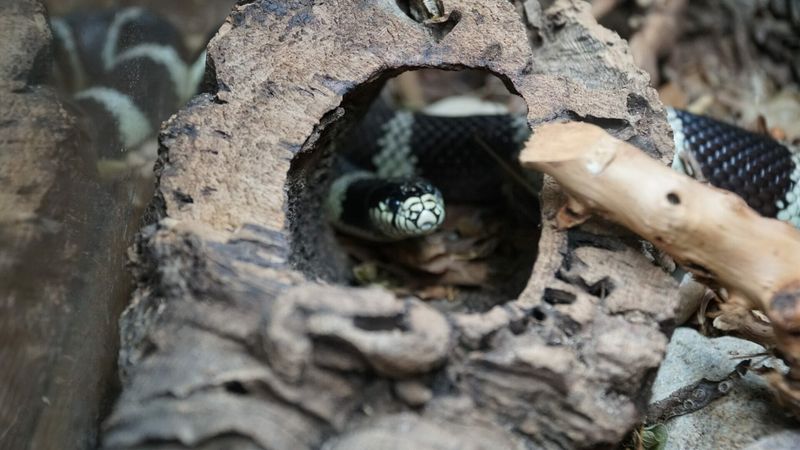
Known for its striking appearance, the California Kingsnake is a marvel of adaptation and resilience. This nonvenomous snake, with its glossy black and white bands, is famous for its ability to eat other snakes, including venomous rattlesnakes.
Despite its fierce diet, it is gentle with humans and often kept as a pet. Found across various habitats, from deserts to forests, it showcases incredible versatility.
Did you know? The California Kingsnake can mimic the rattlesnake’s tail shaking as a defense mechanism, a clever trick to deter predators.

